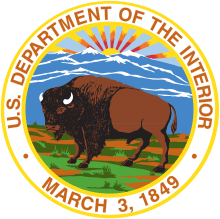Bureau of Indian Affairs
The Bureau of Indian Affairs (BIA) is an agency of the federal government of the United States within the U.S. Department of the Interior. It is responsible for the administration and management of 55,700,000 acres (225,000 km2) of land held in trust by the United States for American Indians, Indian Tribes and Alaska Natives.
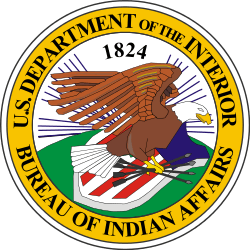 Seal of the U.S. Bureau of Indian Affairs | |
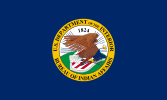 Flag of the U.S. Bureau of Indian Affairs | |
| Agency overview | |
|---|---|
| Formed | March 11, 1824 |
| Preceding agency |
|
| Jurisdiction | Federal Government of the United States |
| Headquarters | Main Interior Building 1849 C Street, NW Washington, D.C., U.S. 20240 |
| Employees | 8,700 (FY08) |
| Agency executives |
|
| Parent agency | United States Department of the Interior |
| Website | www.BIA.gov |
| Part of a series on |
| Indigenous rights |
|---|
| Rights |
| Governmental organizations |
| NGOs and political groups |
| Issues |
| Legal representation |
| Category |
The BIA is one of two bureaus under the jurisdiction of the assistant secretary for Indian affairs: the Bureau of Indian Affairs and the Bureau of Indian Education, which provides education services to approximately 48,000 Native Americans.
The BIA’s responsibilities originally included providing health care to American Indians and Alaska Natives. In 1954 that function was transferred to the Department of Health, Education, and Welfare (now known as the U.S. Department of Health and Human Services), and it is now known as the Indian Health Service.
Organization
Located in Washington, D.C., the BIA is headed by a bureau director who reports to the assistant secretary for Indian affairs. The current assistant secretary is Tara Sweeney.
The BIA oversees 573 federally recognized tribes through 4 offices:
- Office of Indian Services: operates the BIA’s general assistance, disaster relief, Indian child welfare, tribal government, Indian self-determination, and Indian Reservation Roads Program.
- Office of Justice Services (OJS): directly operates or funds law enforcement, tribal courts, and detention facilities on federal Indian lands. OJS funded 208 law enforcement agencies, consisting of 43 BIA-operated police agencies, and 165 tribally operated agencies under contract, or compact with the OJS. The office has seven areas of activity: Criminal Investigations and Police Services, Detention/Corrections, Inspection/Internal Affairs, Tribal Law Enforcement and Special Initiatives, the Indian Police Academy, Tribal Justice Support, and Program Management. The OJS also provides oversight and technical assistance to tribal law enforcement programs when and where requested. It operates four divisions: Corrections, Drug Enforcement, the Indian Police Academy, and Law Enforcement.[1]
- Office of Trust Services: works with tribes and individual American Indians and Alaska Natives in the management of their trust lands, assets, and resources.
- The Office of Field Operations: oversees 12 regional offices; Alaska, Great Plains, Northwest, Southern Plains, Eastern, Navajo, Pacific, Southwest, Eastern Oklahoma, Midwest, Rocky Mountain, and Western; and 83 agencies, which carry out the mission of the bureau at the tribal level.
History
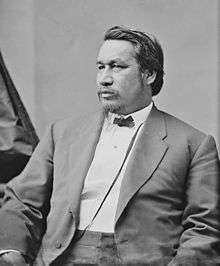
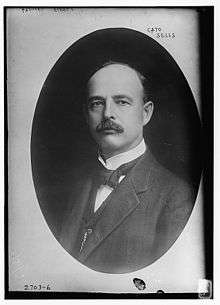
Early US agencies and legislation: Intercourse Acts
Agencies to relate to Native Americans had existed in the U.S. government since 1775, when the Second Continental Congress created a trio of Indian-related agencies. Benjamin Franklin and Patrick Henry were appointed among the early commissioners to negotiate treaties with Native Americans to obtain their neutrality during the American Revolutionary War.[2]
Office of Indian Trade (1806–1822)
In 1789, the U.S. Congress placed Native American relations within the newly formed War Department. By 1806 the Congress had created a Superintendent of Indian Trade, or "Office of Indian Trade"[3] within the War Department, who was charged with maintaining the factory trading network of the fur trade. The post was held by Thomas L. McKenney from 1816 until the abolition of the factory system in 1822.
The government licensed traders to have some control in Indian territories and gain a share of the lucrative trade.
Bureau of Indian Affairs (1824–present)
The abolition of the factory system left a vacuum within the U.S. government regarding Native American relations. The Bureau of Indian Affairs was formed on March 11, 1824, by Secretary of War John C. Calhoun, who created the agency as a division within his department, without authorization from the United States Congress.[4] He appointed McKenney as the first head of the office, which went by several names. McKenney preferred to call it the "Indian Office", whereas the current name was preferred by Calhoun.
The Removal Era (1830–1850)
The BIA's goal to protect domestic and dependent nations, was reaffirmed by the 1831 court case Cherokee Nation v. Georgia. The Supreme Court originally refused to hear the case, because the Cherokee nation was not an independent state and could not litigate in the federal court.[5] It was not until the court case Worcester v. Georgia, when Chief Justice John Marshall allowed Native American tribes to be recognized as "domestic dependent nations." These court cases set precedent for future treaties, as more Native tribes were recognized as domestic and dependent nations.[6]
This period was encompassed by westward expansion and the removal of Native Nations. In 1833 Georgians fought for the removal of the Cherokee Nation from the state of Georgia. Despite the rulings of Worcester v. Georgia, President Monroe and John C. Calhoun created a plan for removal. The removal of the Cherokee Nation occurred in 1838 and was accompanied by the Treaty of 1846. When reparations from the treaty were unfulfilled, the Senate Committee on the Indian Affairs made the final settlement in 1850. This settlement, "supported the position of the Cherokee that the cost of maintaining the tribesman during their removal and the years upkeep after their arrival West should be paid by the federal government, and the expense of the removal agents should be paid as well." [5]
In 1832 Congress established the position of Commissioner of Indian Affairs. In 1849 Indian Affairs was transferred to the U.S. Department of the Interior. In 1869, Ely Samuel Parker was the first Native American to be appointed as commissioner of Indian affairs.
Assimilation (1890–1930)
One of the most controversial policies of the Bureau of Indian Affairs was the late 19th to early 20th century decision to educate native children in separate boarding schools, such as the Carlisle Indian Industrial School. With an emphasis on assimilation that prohibited them from using their indigenous languages, practices, and cultures, these schools educated to European-American culture.[7] Another example of assimilation and Euro-American control was the Bureau of Indian Affairs tribal police force. This was designed by its agents to decrease the power of American Indian leaders.[8]
20th century
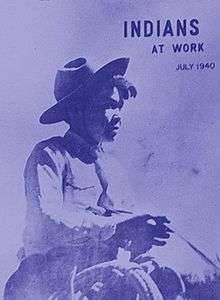
The bureau was renamed from Office of Indian Affairs to Bureau of Indian Affairs in 1947.
With the rise of American Indian activism in the 1960s and 1970s and increasing demands for enforcement of treaty rights and sovereignty, the 1970s were a particularly turbulent period of BIA history.[9] The rise of activist groups such as the American Indian Movement (AIM) worried the U.S. government; the FBI responded both overtly and covertly (by creating COINTELPRO and other programs) to suppress possible uprisings among native peoples.[10]
As a branch of the U.S. government with personnel on Indian reservations, BIA police were involved in political actions such as:
- The occupation of BIA headquarters in Washington, D.C. in 1972: On November 3, 1972, a group of around 500 American Indians with the AIM took over the BIA building, the culmination of their Trail of Broken Treaties walk. They intended to bring attention to American Indian issues, including their demands for renewed negotiation of treaties, enforcement of treaty rights and improvement in living standards. They occupied the Department of Interior headquarters from November 3 to 9, 1972.[11]
- Feeling the government was ignoring them, the protesters vandalized the building. After a week, the protesters left, having caused $700,000 in damages. Many records were lost, destroyed or stolen, including irreplaceable treaties, deeds, and water rights records, which some Indian officials said could set the tribes back 50 to 100 years.[12][13]
- The Wounded Knee Incident of 1973, where activists at the Pine Ridge Indian Reservation occupied land for more than two months.
- The 1975 Pine Ridge shootout (for which Leonard Peltier was convicted of killing two FBI agents).[14]
The BIA was implicated in supporting controversial tribal presidents, notably Dick Wilson, who was charged with being authoritarian; using tribal funds for a private paramilitary force, the Guardians of the Oglala Nation (or "GOON squad"), which he employed against opponents; intimidation of voters in the 1974 election; misappropriation of funds, and other misdeeds.[15] Many native peoples continue to oppose policies of the BIA. In particular, problems in enforcing treaties, handling records and trust land incomes were disputed.
21st century
In 2002 the United States Congress and Bureau of Indian Affairs met to discuss the bill S.1392, which established procedures for the Bureau of Indians Affairs of the Department of Interior, with respect to the tribal recognition. Bill S. 1393 was also discussed, as it ensured full and fair participation in decision making processes at the Bureau of Indian Affairs via grants. Both bills addressed what services, limitations, obligations, and responsibilities a federally recognized tribe possessed. The bills excluded any splinter groups, political factions, and any groups formed after December 31, 2002.[16]
In 2013 the Bureau was greatly affected by sequestration funding cuts of $800 million, which particularly affected the already-underfunded Indian Health Service.[17][18]
Legal issues
Employee overtime
The Bureau of Indian Affairs has been sued four times in class action overtime lawsuits brought by the Federation of Indian Service Employees,[19] a union which represents the federal civilian employees of the Bureau of Indian Affairs, the Bureau of Indian Education, the Assistant Secretary of Indian Affairs and the Office of the Special Trustee for Indian Affairs. As of 2012 the union is represented by the Law Offices of Snider & Associates, LLC,[20] which concentrates in FLSA overtime class actions against the federal government and other large employers. The grievances allege widespread violations of the Fair Labor Standards Act and claim tens of millions of dollars in damages.
Trust assets
Cobell vs. Salazar, a major class action case related to trust lands, was settled in December 2009. The suit was filed against the U.S. Department of Interior, of which the BIA is a part. A major responsibility has been the management of the Indian trust accounts. This was a class-action lawsuit regarding the federal government's management and accounting of more than 300,000 individual American Indian and Alaska Native trust accounts. A settlement fund totaling $3.4 billion is to be distributed to class members. This is to compensate for claims that prior U.S. officials had mismanaged the administration of Indian trust assets. In addition, the settlement establishes a $2 billion fund enabling federally recognized tribes to voluntarily buy back and consolidate fractionated land interests.[21]
Mission
The bureau is currently trying to evolve from a supervisory to an advisory role. However, this has been a difficult task as the BIA is known by many Indians as playing a police role in which the U.S. government historically dictated to tribes and their members what they could and could not do in accordance with treaties signed by both.[22]
Commissioners and Assistant Secretaries
Commissioners and Assistant Secretaries of Indian Affairs include:[23]
Heads of the Bureau of Indian Affairs
- 1822-1824 William Clark
- 1824–1830 Thomas L. McKenney
- 1830–1831 Samuel S. Hamilton
- 2002–2004 Terry Virden[24]
- 2004–2005 Brian Pogue[25]
- 2005–2007 Patrick Rasdale[26]
- 2007–2010 Jerold L. Gidner[27]
- 2010–2016 Michael S. Black[28]
- 2016–2017 Weldon Loudermilk[29]
- 2017–present Bryan C. Rice[30]
Commissioners of Indian Affairs
- 1832–1836 Elbert Herring
- 1836–1838 Carey A. Harris
- 1838–1845 Thomas Hartley Crawford
- 1845–1849 William Medill
- 1849–1850 Orlando Brown
- 1850–1853 Luke Lea
- 1853–1857 George Washington Manypenny
- 1857–1858 James W. Denver
- 1858 Charles E. Mix
- 1858–1859 James W. Denver
- 1859–1861 Alfred B. Greenwood
- 1861–1865 William P. Dole
- 1865–1866 Dennis N. Cooley
- 1866–1867 Lewis V. Bogy
- 1867–1869 Nathaniel G. Taylor
- 1869–1871 Ely S. Parker
- 1871–1872 Francis A. Walker
- 1873–1875 Edward Parmelee Smith
- 1875–1877 John Q. Smith
- 1877–1880 Ezra A. Hayt
- 1880–1881 Rowland E. Trowbridge
- 1881–1885 Hiram Price
- 1885–1888 John D. C. Atkins
- 1888–1889 John H. Oberly
- 1889–1893 Thomas Jefferson Morgan
- 1893–1897 Daniel M. Browning
- 1897–1904 William Arthur Jones
- 1904–1909 Francis E. Leupp
- 1909–1913 Robert G. Valentine
- 1913–1921 Cato Sells
- 1921–1929 Charles H. Burke
- 1929–1933 Charles J. Rhoads
- 1933–1945 John Collier
- 1945–1948 William A. Brophy
- 1948–1949 William R. Zimmerman (acting)
- 1949–1950 John R. Nichols
- 1950–1953 Dillon S. Myer
- 1953–1961 Glenn L. Emmons
- 1961 John O. Crow (acting)[31][32]
- 1961–1966 Philleo Nash
- 1966–1969 Robert L. Bennett
- 1969–1972 Louis R. Bruce
- 1973–1976 Morris Thompson
- 1976–1977 Dr. Benjamin Reifel
Assistant Secretaries of the Interior for Indian Affairs
- 1977–1978 Forrest Gerard
- 1979–1981 William E. Hallett
- 1981–1984 Kenneth L. Smith
- 1985–1989 Ross Swimmer
- 1989–1993 Eddie Frank Brown
- 1993–1997 Ada E. Deer
- 1997–2001 Kevin Gover
- 2001 James H. McDivitt (acting)
- 2001–2003 Neal A. McCaleb
- 2003–2004 Aurene M. Martin (acting)
- 2004–2005 Dave Anderson
- 2005–2007 Jim Cason (acting)
- 2007–2008 Carl J. Artman
- 2008–2009 George T. Skibine (acting)
- 2009–2012 Larry Echo Hawk
- 2012 Donald "Del" Laverdure (acting)
- 2012–2015 Kevin K. Washburn
- 2016–2017 Lawrence S. Roberts (acting)[33]
- 2017 Michael S. Black (acting)[34]
- 2017–2018 John Tahsuda (acting)[35]
- 2018–present Tara Sweeney
See also
- Title 25 of the Code of Federal Regulations
- Aboriginal Affairs and Northern Development Canada
- Administration for Native Americans
- British Indian Department
- American Indian Movement
- Bureau of Indian Affairs Police
- Indian agent
- Indian Claims Commission
- Indian Department
- Indian reservations
- National Indian Gaming Commission
- Outline of United States federal Indian law and policy
- United States federal recognition of Native Hawaiians
References
- "Who We Are", BIA
- Henson, C.L. "From War to Self-Determination: a history of the Bureau of Indian Affairs". American Resources on the Net. Retrieved May 6, 2016.
- Waldman, Carl; Braun, Molly (2009). Atlas of the North American Indian. Infobase Publishing. p. 236. ISBN 978-0-8160-6858-6.
in 1806, an Office of Indian Trade was created within the War Department
- Jackson, Curtis (1997). A History of the Bureau of Indian affairs and Its Activities Among Indians. San Francisco, California: R & E Research. p. 43.
- Harmon, George Dewey (1941). Sixty Years of Indian Affairs. New York: The University of North Carolina Press. pp. 174–196.
- Jackson, Curtis (1977). A History of The Bureau of Indian Affairs And It's Activities Among Indians. San Francisco, California: R & E Research Associates. p. 59.
- Dennis Banks, "Ojibwa Warrior," 2004: 29–28
- Lyden, Fremont (1992). Native Americans and Public Policy. Pittsburgh: University of Pittsburgh Press. pp. 23–41.
- Philip Worchel, Philip G. Hester and Philip S. Kopala, "Collective Protest and Legitimacy of Authority: Theory and Research," The Journal of Conflict Resolution, 18 (1) 1974): 37–54
- The COINTELPRO PAPERS – Chapter 7: COINTELPRO – AIM Archived July 23, 2008, at the Wayback Machine
- Paul Smith and Robert Warrior, Like a Hurricane: The Indian Movement from Alcatraz to Wounded Knee, New York: The New Press, 1996.
- "Stop bandwidth theft!". Maquah.net. Retrieved June 8, 2012.
- "Stop bandwidth theft!". Maquah.net. Retrieved June 8, 2012.
- "American Indian Rights Activist Vernon Bellecourt", Washington Post, October 14, 2007
- Ward Churchill, Jim Vander Wall, Agents of Repression: The FBI's Secret Wars Against the Black Panther Party and the American Indian Movement, South End Press, 2002.
- Congress, United States (2003). Tribal Recognition : Hearing before the Committee on Indian Affairs, United States Senate, One Hundred Seventh Congress, Second Session, on S. 1392, to Establish Procedures for the Bureau of Indian Affairs of the Department of the Interior with Respect to Tribal Recognition and S. 1393, to Provide Grants to Ensure Full and Fair Participation in Certain Decision making Processes at the Bureau of Indian Affairs. Washington D.C.: Washington D.C. United States Government Printing Office. pp. 1–3.
- Gale Courey Toensing (March 27, 2013). "Sequestration Grounds Assistant Secretary for Indian Affairs". Indian Country Today. Retrieved March 28, 2013.
- Editorial Board (March 20, 2013). "The Sequester Hits the Reservation" (Editorial). The New York Times. Retrieved March 28, 2013.
- "FEDERATION OF INDIAN SERVICE EMPLOYEES - AFT - AFL/CIO, Local 4524 - Home". Ief.aft.org. Archived from the original on August 19, 2009. Retrieved June 8, 2012.
- "Overtime Lawyer Website". Overtime.com. Archived from the original on January 11, 2012. Retrieved June 8, 2012.
- “Cobell vs. Salazar Lawsuit”. doi.gov/tribes/special-trustee.cfm. Office of Special Trustee, n.d. Web. April 24, 2011
- "From War to Self-Determination: the Bureau of Indian Affairs". Americansc.org.uk. May 25, 2011. Retrieved June 8, 2012.
- "U.S. government departments and offices, etc". Rulers.org. Retrieved June 8, 2012.
- Secretary, Office of the. "Martin Confirms Terry Virden As BIA Deputy Commissioner". www.doi.gov.
- "Anderson Names Brian Pogue as New BIA Director". www.doi.gov.
- "Assistant Secretary Announces W. Patrick Ragsdale". www.doi.gov.
- "News report" (PDF). www.cherokeeobserver.org. April 2008.
- "News release" (PDF). www.bia.gov.
- "Interior Picks Two for Key BIA, BIE Leadership Jobs - Indian Country Media Network". indiancountrymedianetwork.com.
- "Secretary Zinke Names Bryan Rice Director of Bureau of Indian Affairs". www.doi.gov.
- "John O. Crow Named Acting Commissioner of Indian Affairs and Member of Advisory Board on Indian Affairs" (PDF). Bureau of Indian Affairs. February 10, 1961. Archived from the original (PDF) on June 10, 2014. Retrieved July 30, 2015.
- "Nash Nominated as Commissioner of Indian Affairs; Crow Appointed Deputy Commissioner" (PDF). Bureau of Indian Affairs. August 1, 1961. Archived from the original (PDF) on March 4, 2016. Retrieved July 30, 2015.
- "News release" (PDF). www.indianaffairs.gov. Archived from the original (PDF) on February 2, 2018. Retrieved May 1, 2018.
- "Archived copy". Archived from the original on May 13, 2017. Retrieved May 11, 2017.CS1 maint: archived copy as title (link)
- "Kiowa citizen John Tahsuda set to join Bureau of Indian Affairs leadership team".
Sources
- Belko, William S. "'John C. Calhoun and the Creation of the Bureau of Indian Affairs: An Essay on Political Rivalry, Ideology, and Policymaking in the Early Republic," South Carolina Historical Magazine 2004 105(3): 170–97. ISSN 0038-3082
- Cahill, Cathleen D. Federal Fathers and Mothers: A Social History of the United States Indian Service, 1869–1933 (U of North Carolina Press, 2011) 368 pp. online review
- Deloria, Jr., Vine, and David E. Wilkins, Tribes, Treaties, & Constitutional Tribulations (Austin, 1999)
- Jackson, Helen H. A Century of Dishonor: A Sketch of the U. S. Government's Dealings with Some of the Indian Tribes (1881) online edition
- Leupp, F. E. The Indian and His Problem (1910) online edition
- Meriam, Lewis, et al., The Problem of Indian Administration, Studies in Administration, 17 (Baltimore, 1928)
- Pevar, Stephen L. The Rights of Indians and Tribes (Carbondale, 2002)
- Prucha, Francis P. Atlas of American Indian Affairs (Lincoln, 1990)
- Prucha, Francis P. The Great Father: The United States Government and the American Indians (Abridged Edition 1986) excerpt and text search
- Schmeckebier, L. F. Office of Indian Affairs: History, Activities, and Organization, Service Monograh 48 (Baltimore 1927)
- Sutton, I. "Indian Country and the Law: Land Tenure, Tribal Sovereignty, and the States," ch. 36 in Law in the Western United States, ed. G. M. Bakken (Norman, 2000)
Primary sources
- Francis P. Prucha, ed. Documents of United States Indian Policy (3rd ed. 2000) excerpt and text search
External links
| Wikimedia Commons has media related to Bureau of Indian Affairs (United States). |
- Official website
- Bureau of Indian Affairs in the Federal Register
- A History of the Bureau of Indian Affairs
- Background information about the Cobell Litigation
- Indian Schools papers, 1929–1945, in the Southwest Collection/Special Collections Library at Texas Tech University
- Bureau of Indian Affairs-collection of letters at Texas Tech University
- Broken Promises: Evaluating the Native American Health Care System by the U.S. Commission on Civil Rights, September 2004
- Bureau of Indian Affairs Indian Relocation Records at Newberry Library
- Bureau of Indian Affairs correspondence, MSS SC 785 at L. Tom Perry Special Collections, Harold B. Lee Library, Brigham Young University
